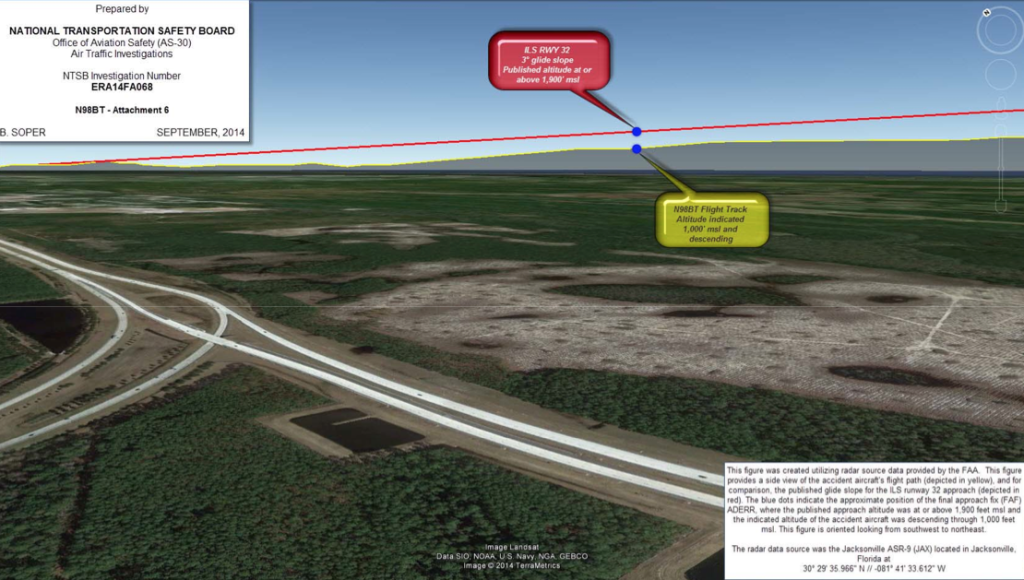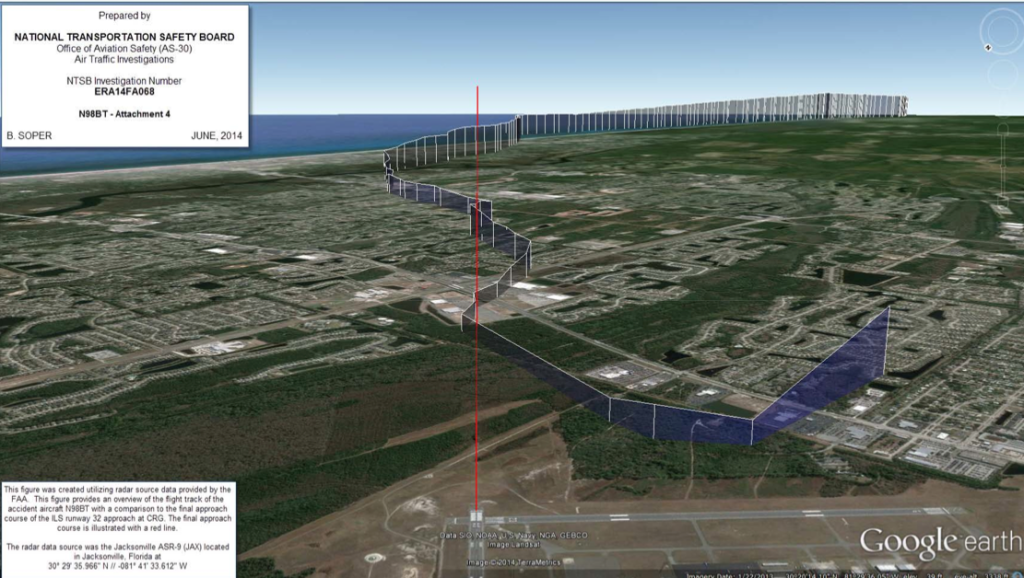
Photo courtesy National Transportation Safety Board report
The plane crash that took the life of UNF golf player Tess Huber and two others on Dec. 8 of last year was attributed to a loss of spatial awareness by the pilot and the pilot’s lack of instrument proficiency.
This is according to the National Transportation Safety Board’s (NTSB) Public Relations department.
According to the NTSB accident report, the plane was off the path it needed to be on to land safely and properly. In order to get back on path, the pilot began executing a missed approach, where it would continue in the air and attempt to land again.
According to JAX Satellite Controller Donald Mager, the weather had already caused three or four aircraft to execute missed approaches previously at different airports during that shift.

Photo courtesy NTSB report
The pilot acknowledged instructions given by ground control while turning left from the airport, then contact was lost.
After repeated attempts to contact the pilot, Mager said he felt the aircraft might have crashed. Mager started “sterilizing,” or clearing the airspace of other traffic, since he did not know exactly where the aircraft was.
While trying to get in contact with the pilot, air controllers noticed irregularities with the radar. It was noted that the aircraft was “in coast status,” leading Craig Airport Local Controller Keith Schlegel to call 911 and notify them of a possible accident.
The 911 dispatcher informed him that an aircraft accident had already been reported in a local neighborhood and that emergency responders were on the way.
According to JAX Operations Supervisor William Turner, there were 10 controllers on duty at the time of the accident.
The accident report estimates the time of the crash to have been approximately 6:21 p.m.
At the time of the accident, there was a light mist that could have potentially contributed to the pilot’s loss of spatial awareness. Spatial awareness is the pilot’s perception of how he or she is oriented in terms of the attitude and position of the aircraft.
The pilot, Michael Huber, had 1,550 total flight hours, with only 30 hours of flight time in the model of airplane he flew that day.
The plane crashed into a retention pond, killing Tess Huber, her father Michael and her sister Abigail.
Email Jake Stofan at [email protected]

















